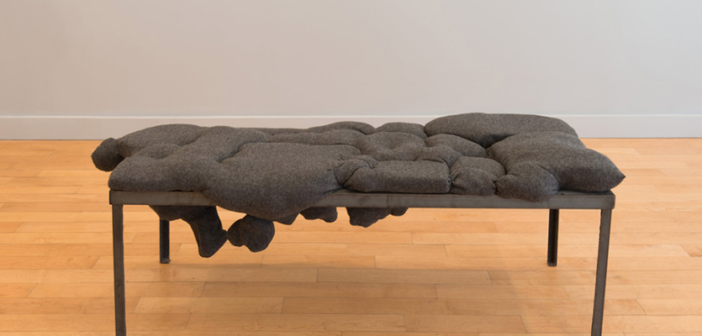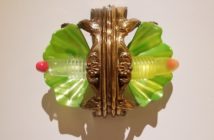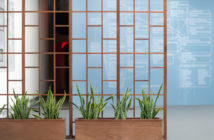I first experienced Audrey Goldstein’s work at the Museum of Fine Arts (Boston, MA), after she had won the SMFA Traveling Fellowship in 2007. Goldstein exhibited two healing machines: “Generosity Generator” and “The Medicine Cabinets”, which investigated our internal systems, and invited the viewer to evoke some sense of empathy and peace while examining their role in the imagined space. Goldstein’s last solo presentation Issues Of Trust II at Gallery Kayafas (2014) scrutinized the use of materials and invented spaces, physical and imaginative, about our increasing disconnection from the body’s perceptions. One could even experience the exhibition by sitting on a bench sculpture that echoed a womb-like sensibility, or by wearing a willow sculpture around your neck like twisted up human veins. An overt interplay between materials assumed the guise of others and suspension between weight and weightlessness disoriented the viewer instead of reinforcing how each piece was experienced.
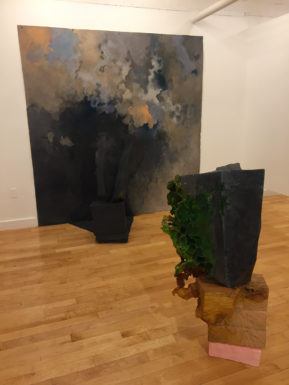
Audrey Goldstein, A Question of Indetermination.
These themes are the foundation of a new body of work presented in The Repair Reflex currently on view at Gallery Kayafas. Goldstein continues to make work that explores personal boundaries, transformation; and her use of materials redefines our senses and perceptions of the world. For years, she has guided the viewer through her most consequential transformation yet which expands her exploration of sculpture as objects of vulnerability. These objects are both susceptible to uncontrolled forces, such as trauma, and are internally receptive to change, such as healing.
At its most essential, sculpture is the manipulation of matter in real space and time. The working methods of sculpture may be described as additive or subtractive, and Goldstein’s previous work has examined these qualities by using handmade malleable materials that mimic firm and durable sculptural materials. In a lecture at Skowhegan School of Painting & Sculpture this past summer, Robert Gober spoke about the laborious and detailed way of making his objects that fool the viewer into believing they’re the actual object, what appears to be a cheap indestructible vinyl patio chair is, in reality, an extremely intricate, fragile stoneware casting. Remaking an object in an unexpected material implies a different level of engagement than simply acquiring or finding that same object. Goldstein’s chosen materials in The Repair Reflex, as well as the deep involvement in the making of the work, are vital concerns for both Goldstein and the viewer. What appears to be soft, malleable pink foam is painted as stable wood, and what appears hard is gentle and pliable, reminiscent of the inside structure of Eva Hesse’s Accession IV sculpture. Is this work simply a trompe l'oeil testing the limits of our perception?
Goldstein created this work over the last year and a half while experiencing a medically rough time in her life against the backdrop of international terrorism. Witnessing her triumph of conquering illness, I am reminded of other powerful female artists like Louise Bourgeois and Doris Salcedo, whose work has been influenced by psychological or socio-political trauma. Goldstein explains that “the work looks at the aftermath and how we instinctively comb through rubble looking for what is left and what can be salvaged. It was made by picking up the pieces and beginning again.”
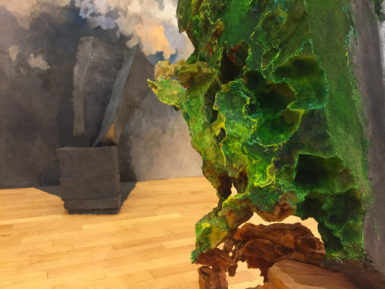
Audrey Goldstein, A Question of Indetermination (detail).
Goldstein continues that in The Repair Reflex using Bernini’s Apollo and Daphne as an origin, exploring the vulnerability and alchemy of the myth as a “guide.” Baroque artists like Bernini were interested in instability and the drama of the subjects they were depicting. In Apollo and Daphne, Bernini, therefore, chose to portray the cathartic moment in classical mythology when Daphne, fleeting Apollo’s yearning, can only escape his lust by returning to earth and transforming into a laurel tree. In this installation, Goldstein has mirrored the aftermath of a disaster, when normality is upended.
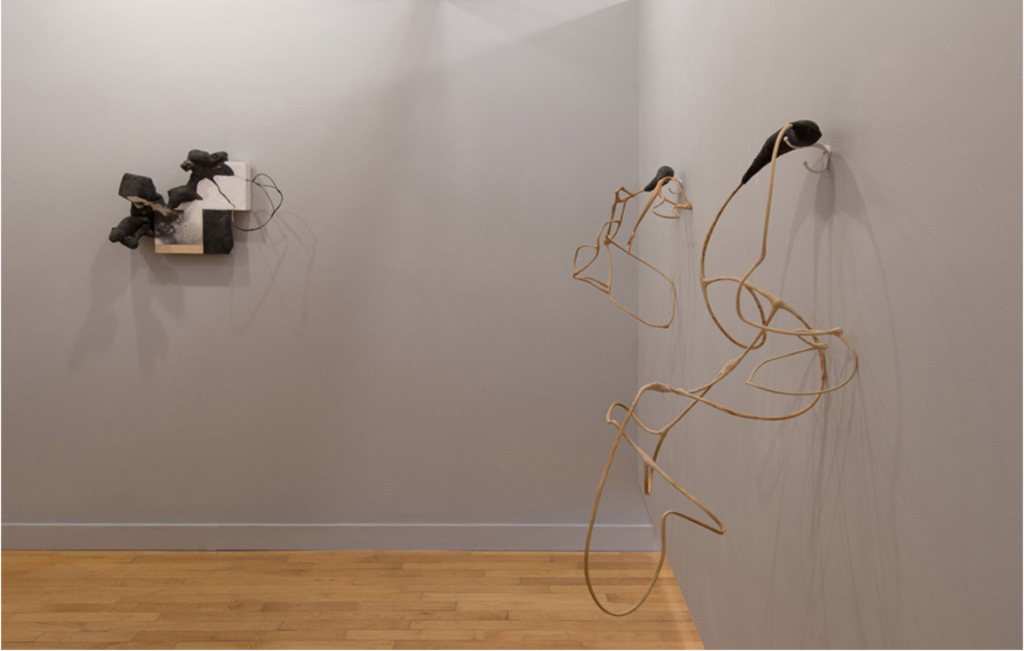
Audrey Goldstein, Issues of Trust II.
Entering the gallery, you become part of The Repair Reflex’s pair of life-size sculptures, the fraternal twins, approximating the before and after of traumatic transformation. Whereas the back gallery shows the viewer a state of indetermination, a place for transition, The Repair Reflex shows the pivotal moment Daphne, knowing she can’t escape Apollo’s lust, begins her transformation. Works on paper accompanying the sculptures, like family portraits, are Goldstein’s vision of Daphne’s brain at the time of her transformation.
These works blur the boundaries between movement and stillness; overcome the distinctions between foreground and background, between occupied space and space at large, between inside and out. As Goldstein says, The Repair Reflex offers “a scaffolding for future repairs...a scaffolding that needs scaffolding for support.”
A cycle of building and collapsing is Goldstein’s process of generating fragments from the ruins. As sculptural collage, these fragments alter the profile of the underlying work just as change altered the destroyed versions. Each life-size sculpture was built using soft materials that couldn’t endure temperature changes or gravitational forces, like a doctor treating an open wound, and skin bearing the marks of demolition. The incisions in the work may also refer to mechanical or digital printing.
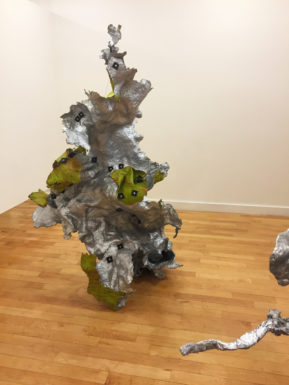
Audrey Goldstein, The Repair Reflex.
What comes after a disaster? When does the healing start? Internal and/or external terrorism doesn’t only change our perception of the world around us, it challenges ideas of trust and vulnerability within ourselves. By changing the paradigm, we no longer need to turn into a laurel tree every time our invulnerability is attacked.
The Repair Reflex is on view at Gallery Kayafas through February 25th with First Friday reception Feb 3 5:30-8pm. Visit www.audreygoldstein.com or www.gallerykayafas.com for more information.

